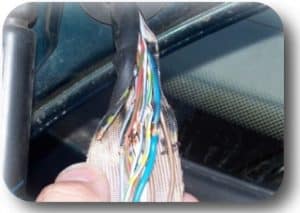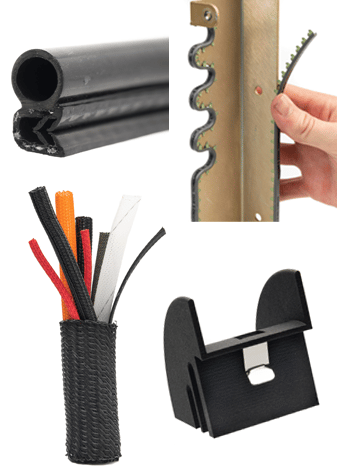Two wire chafe issues in the news clearly highlight the critical nature of the Electrical Wiring Interconnect System (EWIS) and its importance to safe flight. The EWIS is the aircraft's “central nervous system” that connects all the aircraft's critical systems.
Wall Street Journal article
THE WSJ is reporting that the FAA and EASA are at odds over a potential wiring issue that was flagged during the ongoing review of certification procedures on the Boeing 737 MAX. Boeing recently alerted the FAA that a wiring bundle for the tail section controls on the MAX –and maybe the previous generation NGs –might not have enough clearance from each other and may be at risk for short circuits.

Severe chafe on an aircraft
Avweb article
The NTSB has issued recommendations to the FAA and National Civil Aviation Agency of Brazil to order checks for wire chafing on the pitch trim controls of Embraer E-series aircraft after an incident in Atlanta in November. A Republic Airlines EMB-175 lost pitch trim control shortly after takeoff Nov. 9. The captain tried to engage the autopilot but it wouldn’t activate. He quickly diagnosed the problem but the autopilot/pitch trim wouldn’t disconnect.
Both pilots had to use two hands to keep the nose down before the first officer’s switch finally worked and they were able to retrim the plane. Investigators found a chafed wire in the captain’s control column caused by contact with a safety wire pigtail. Republic inspected its other EMB-170/175s and found nine other aircraft with similar chafing.
Small things can lead to potential disasters.
A narrow-body airliner such as the Boeing 737NG has as much as 40 miles of wiring and the wide-body Boeing 747 has 150 miles of wires. This wiring is the EWIS and is as critical as any avionics.
Almost all of this wiring is routed through penetrations in the aircraft structure. Penetrations are strategically located, dedicated conduits for wire, cables, and fluid and pneumatic lines. Wiring harnesses are typically supported by a clamp that is attached to the airframe over and adjacent to the penetration.
The penetrations are sized to be as small as practical so as to not weaken the structure or reduce its stiffness. This can result in clearances between the wiring and the adjacent airframe as small as 1/4 inch. A 1/4″ is not much when wiring is subjected to the stresses and strains of flight and can easily result in chafe, systems failure (as in the Avweb story), or worse yet arcing and sparking.
Not exactly a pleasant thought to have when you're experiencing turbulence.
Naturally, service techs are on the alert to inspect the EWIS to ensure this kind of degradation doesn't happen…or at least to catch it quickly before it causes systems failures/discrepancies.
A significant problem however is that a substantial portion of aircraft wiring routing is not easily accessible or visible for inspection. This means techs may never see – until it's too late- a wire that is starting to chafe.
The current system of protection is a legacy practice that has been in place since the 1940s/50s. OEMs and techs use glued-on nylon grommets on the edges of penetrations to protect against wiring chafe. However, the application is long, slow, and costly and both the nylon and glue are subject to degradation and disbonding. And if the wiring they are protecting is out of sight then potential problems are never seen.
It's hard to get data on wiring degradation but some NAVAIR research showed that when aircraft were designated as AOG (Aircraft on Ground) or NORS (Non-Operational Ready Status), the biggest single reason -at 37%- was wiring discrepancies due to chafe. Clearly chafe is a significant drag on readiness, availability, and efficiency and clearly impacts medium to long-term operational costs…whether military or commercial.
That is why many OEMs as well as MRO/FBOs are switching away from the old legacy SOP of glued nylon grommets to the Spring-Fast protective edge grommets. Doing this from first construction means those hard-to-access routings are safe from chafe and accessible edges are quickly and easily protected.
Spring-Fast grommets provide best-in-class performance, are lighter in weight, offer superior retentive strength, and can be removed and reinstalled in a matter of seconds with just finger pressure. No glue! Better yet the installed cost is half that of glued nylon grommets.
DTi supplies grommet edging and other wire protection products to a wide range of aerospace, rail, and automotive OEMs and has done so since 1984.
WSJ article here
Find DTi Spring-Fast Grommets here.

